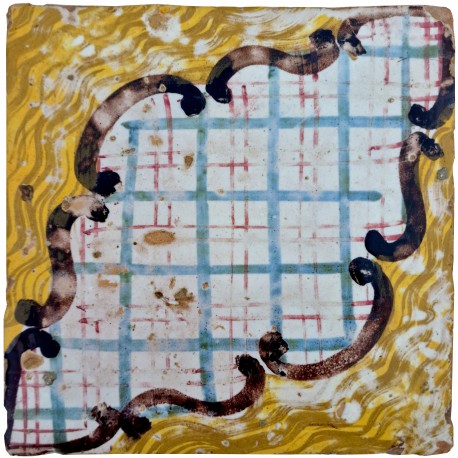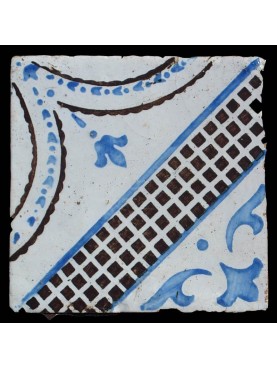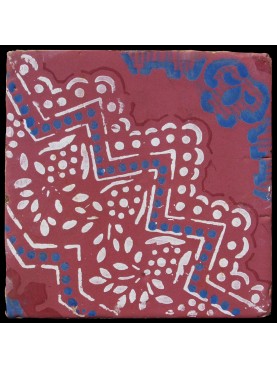Old ocher and check pattern antique tile
Old ocher and check pattern antique tile
Original
Antique tile 20x20cm.
White aluminum oxide and hand-painted marble veins.

5 Available
Data sheet
| Thickness | 0.71 in | 1,8 cm |
| Weight | 2.87 lbs | 1,3 Kg |
| Ancient manufacturing source | Tommaso Bruno | |
| Side * Side | 7.87 in X 7.87 in | 20x20 cm |
More info
ANCIENT TOMMASO BRUNO
Tommaso and Salvatore Bruno's factory exported bricks to the East, especially to Tunisia, and to Sicily: Vincenzo Strino underlines the export of the factory with a "copiosa".
There are 10 different trademarks of the Tommaso Bruno factory that we have collected.
This factory produced throughout the 19th century.
dl Book: "The influences of Neapolitan culture"
by Maria Regina
But rather than going back to the influence of foreign ceramists, it seems more realistic that Armao was inspired by some prototypes of the most important Neapolitan factories of the time, such as those of the Giustinianis, the Succursale delle donne, the Fratelli Tajani, Tommaso Bruno, already time present in the island market. In fact, the refined range of colors and the decorative motifs of the Armao production are closer to the Neapolitan production, rather than that of Marseille, Caltatina or Palermo.
This hypothesis is supported not only by the comparison between the two types, but also by a historical motivation. Armao, on the eve of the 1848 revolution, was one of the members of the anti-Bourbon Insurrectionary Civic Committee, connected to the central one in Naples and for this reason he had been subjected to special surveillance by the police (it should be remembered, for example, that the anti-Bourbon movement Messina of 1 September 1847 had been prepared precisely by the Neapolitan Central Committee).
The commonality of political ideals can lead us to suppose that Armao had the possibility of having contacts with Neapolitan circles, or that he had the opportunity to directly know the production of the factories of the time.
The historical theme of the decorative panel depicting Emperor Napoleon III was considered "the clearest demonstration of the presence of French potters in Santo Stefano". Instead, it can be assumed that it was made on the model of a French press, and the motivation can be found in the historical moment in which Don Gaetano Armao lived, who had a past as an anti-Bourbon patriot, being a supporter of the unification of Italy. The Emperor Napoleon III in the Congress of Paris of 1856 had supported the Italian cause and a month later he had broken, together with England, diplomatic relations with the Bourbon court, a break that would have committed Napoleon and his troops a few years later in the second war of independence.
In 1861 at the Italian Exposition in Florence Gaetano Armao was rewarded and the old trademark was replaced by an oval, with a coat of arms in the center depicting an armed arm holding a sword (as if to claim descent from the ancestor don Michele Armao) with the new inscription "Awarded Fratelli Armao factory". In the second half of the 19th century, the Armao factory produced 15,000 majolica bricks a month and owned a large warehouse in Palermo, near the port of Cala, to embark the production for export also to North African countries. Even today it is possible to admire some wall panels in the noble palaces or in the porticoes of the mosques in Tunis, Algeria and also in Turkey.
Tommaso and Salvatore Bruno's factory exported bricks to the East, especially to Tunisia, and to Sicily: Vincenzo Strino underlines the export of the factory with a "copiosa".

































